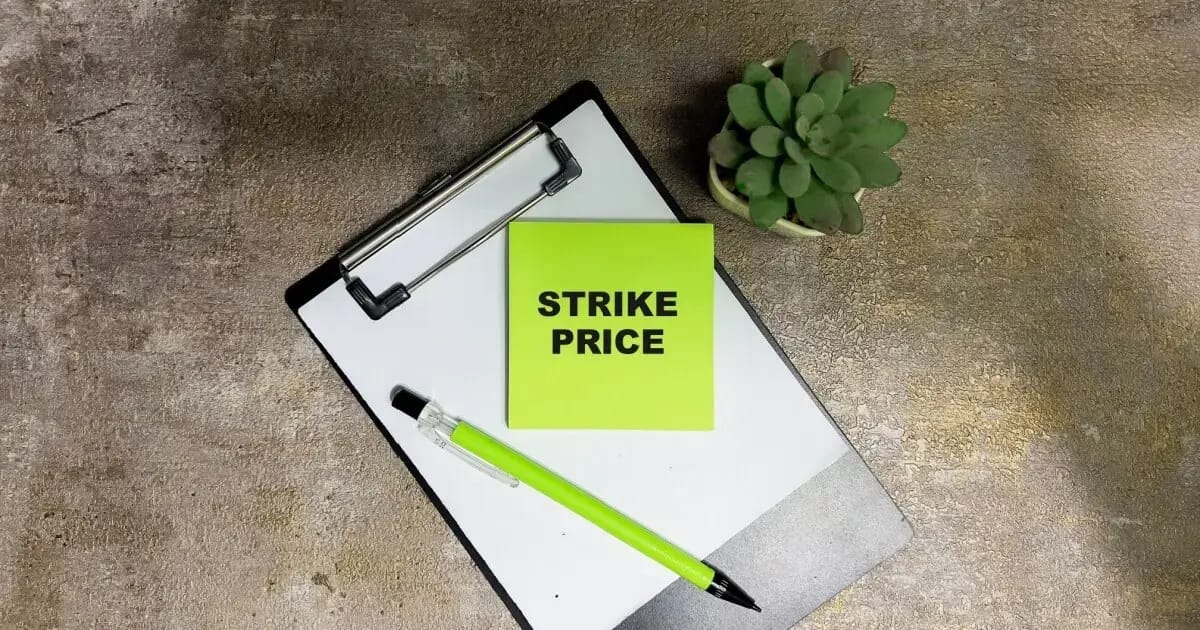- The Option Premium
- Posts
- 📚 Options Trading 101: Understanding Strike Prices
📚 Options Trading 101: Understanding Strike Prices
Learn how strike prices work in options trading. This beginner-friendly guide explains the role of strike prices in determining profitability, risk, and strategy selection. Includes real-world examples and clear insights tailored for new traders.

Introduction: What Is a Strike Price?
If you're new to options trading, the term strike price may sound a bit technical. But it’s one of the most essential concepts you'll need to master. In simple terms, the strike price is the fixed price at which an option can be exercised — either to buy (in the case of a call option) or to sell (in the case of a put option) the underlying asset.
Think of the strike price as your deal-making price. It doesn’t change once you open a trade, and everything, from your potential profits to your risk exposure, hinges on where that strike price sits in relation to the current market price.
Let’s unpack that.
Why the Strike Price Matters
Every option contract is built on a relationship between three things:
The underlying stock or ETF
The market price (a.k.a. the current price)
The strike price
The difference between the strike price and the market price determines whether the option is in the money (ITM), at the money (ATM), or out of the money (OTM).
✅ Call Option Examples:
ITM: SPY is trading at $580. You hold a call with a $570 strike. You're $10 in the money.
ATM: SPY is trading at $580. You hold a call with a $580 strike. It’s at the money.
OTM: SPY is trading at $580. You hold a call with a $590 strike. The call has no intrinsic value, yet.
✅ Put Option Examples:
ITM: QQQ is at $510. You own a put with a $520 strike. It’s $10 in the money.
ATM: QQQ is at $510. You own a put with a $510 strike.
OTM: QQQ is at $560. You own a put with a $550 strike.
Understanding these dynamics isn’t academic, it directly affects how much you pay, how much you can make, and how you manage risk.
As a seller of options, the path I teach and trade, you use strike prices strategically to stack the odds in your favor.
Let’s say you’re selling a cash-secured put on IWM (Russell 2000 ETF). It’s trading at $202.50. You choose a $195 strike put with 27 days to expiration and collect $3.03 in premium.

IWM 195 strike - cash-secured put (27 dte)
Here’s your math:
Your break-even is $191.97 ($195 strike minus $3.03 premium).
If IWM stays above $195, the option expires worthless, and you keep the premium.
If IWM drops below $195, you're assigned shares at a net cost of $191.97, 5.2% lower than today's price of $202.50.
You chose that strike not randomly, but because it offered a high probability of profit, strong implied volatility, and favorable reward-to-risk.
This is where beginners often miss the point: the strike price isn’t just a technical input, it’s the foundation of your edge.
Choosing the Right Strike: Frameworks for New Traders
There’s no one-size-fits-all formula, but here’s a rule of thumb we use inside The Option Premium services:
Prefer a safer path to returns? Go further OTM. You'll collect less premium but increase your probability of profit.
Want more income? Move closer to ATM, but only when IV rank is high and market breadth supports a mean-reverting setup.
Trading earnings? Use expected move as a boundary and strike pricing tool.
This is how smart traders use expected move, RSI levels, IV percentile, and breadth indicators to pair strike selection with real market context, not guesswork.
Inside our free newsletter, we regularly publish weekly strike zone opportunities, highlighting optimal strikes for SPY, QQQ, IWM, and sector ETFs using volatility, breadth, and RSI overlays.
Common Mistakes to Avoid
Beginner traders often make these three errors with strike prices:
Chasing high premiums near-the-money without checking IV or earnings dates.
Choosing unrealistic strikes far OTM during low-volatility markets, with almost no premium.
Ignoring delta, a hidden clue that tells you the probability of your strike finishing in the money.
Instead, learn to use strike prices as part of a repeatable process, not just a guess.
Final Word: Strike Prices Are the Chessboard
You’re not gambling. You’re making calculated trades based on math, probabilities, and market context. The strike price is your chessboard, and every trade is a move toward long-term consistency.
Mastering how to select and interpret strike prices puts you on the path toward becoming a real options strategist, not just a trade chaser.
📬 If you enjoyed this breakdown, don’t miss next week’s Options Trading 101: First Steps to Trading in The Option Premium, your go-to source for clear, actionable options education.
Probabilities over predictions,
Andy Crowder
🎯 Ready to Elevate Your Options Trading?
Subscribe to The Option Premium, a free weekly newsletter delivering:
✅ Actionable strategies.
✅ Step-by-step trade breakdowns.
✅ Market insights for all conditions (bullish, bearish, or neutral).
📩 Get smarter, more confident trading insights delivered to your inbox every week.
📺 Follow Me on YouTube:
🎥 Explore in-depth tutorials, trade setups, and exclusive content to sharpen your skills.
Reply